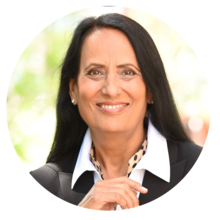About this Presentation
This presentation discusses a little used tool in the theory of constraints thinking processes (TP), the intermediate objectives ((IO) map. Shortcomings of the future reality tree and evaporating cloud lead to the investigation of the use of the IO map to overcome these shortcomings. The presentation discusses the TP background, the role of a goal and necessary conditions, functions of the IO map, and a practical exercise. The original TP tools and their sequence in use was current reality tree (CRT), evaporating cloud (EC), future reality tree (FRT), prerequisite tree (PRT), and transition tree (TRT). While the CRT was the first and most critical step as this represented the identification of the core problem several problems existed: ponderous, too complex; too many undesirable effects and difficulty in reaching a single core problem. The process needs focus to avoid vague undesirable effects (UDEs) unrelated to the goal. The process should include: 1. Define the system in question; 2. Articulate the goal of the system; 3. Determine the critical success factors (a few instrumental terminal outcomes); 4. Define supporting necessary conditions (usually high-level, functional in nature). The IO map consists of a hierarchy from goal to critical success factors to necessary conditions to…. The benefits of an IO map are discussed. System boundaries are illustrated; span of control and sphere of influence are discussed. A simple IO map for a manufacturer is provided. The IO map may be used to identify the UDEs that should be used in the CRT. This will help eliminate trivial UDEs and simplify the CRT.
What Will You Learn
To help you get the most value from this session, we’ve highlighted a few key points. These takeaways capture the main ideas and practical insights from the presentation, making it easier for you to review, reflect, and apply what you’ve learned.

Instructor(s)
Bill Dettmer

Ms Alka Wadhwa
Alka Wadhwa is an experienced consultant and process improvement expert with over 24 years of expertise in the Theory of Constraints (TOC), Lean Six Sigma, and organizational performance optimization. She has successfully led projects in healthcare, financial services, and manufacturing, driving significant improvements such as a 67% boost in hospital operations and a 140% increase in outpatient visits.
Previously, Alka Wadhwa spent 17+ years at GE Global Research Center, where she led initiatives to enhance various GE businesses through advanced technologies, process redesign, and system optimization. Founder of Better Solutions Consulting, LLC, she specializes in using TOC, Six Sigma, and data analytics to streamline operations and build high-performance teams.
Her work has earned her multiple accolades, including the Empire State Award of Excellence in healthcare.

Dr Gary Wadhwa
Dr. Gary Wadhwa is a Board Certified Oral & Maxillofacial Surgeon with extensive experience in the field. He completed his Oral & Maxillofacial Surgery training at Montefiore Hospital, Albert Einstein College of Medicine in Bronx, NY, and has served as an Attending at prestigious institutions like St. Peters Hospitals, Ellis Hospital, and Beth Israel Hospital in NY. With a career spanning over two decades, he was the former CEO and President of a group specialty practice in NY from 1994 to 2015. Dr. Wadhwa holds an MBA from UT at Knoxville, TN, and has undergone additional training in System Dynamics at MIT, Health System Management at Harvard Business School, and Entrepreneurship and healthcare innovations at Columbia Business School. Committed to expanding access to Oral & Maxillofacial Surgery care, he is currently engaged in a meaningful project to provide healthcare services to underserved populations in inner city and rural areas through non-profit Community Health Centers.
